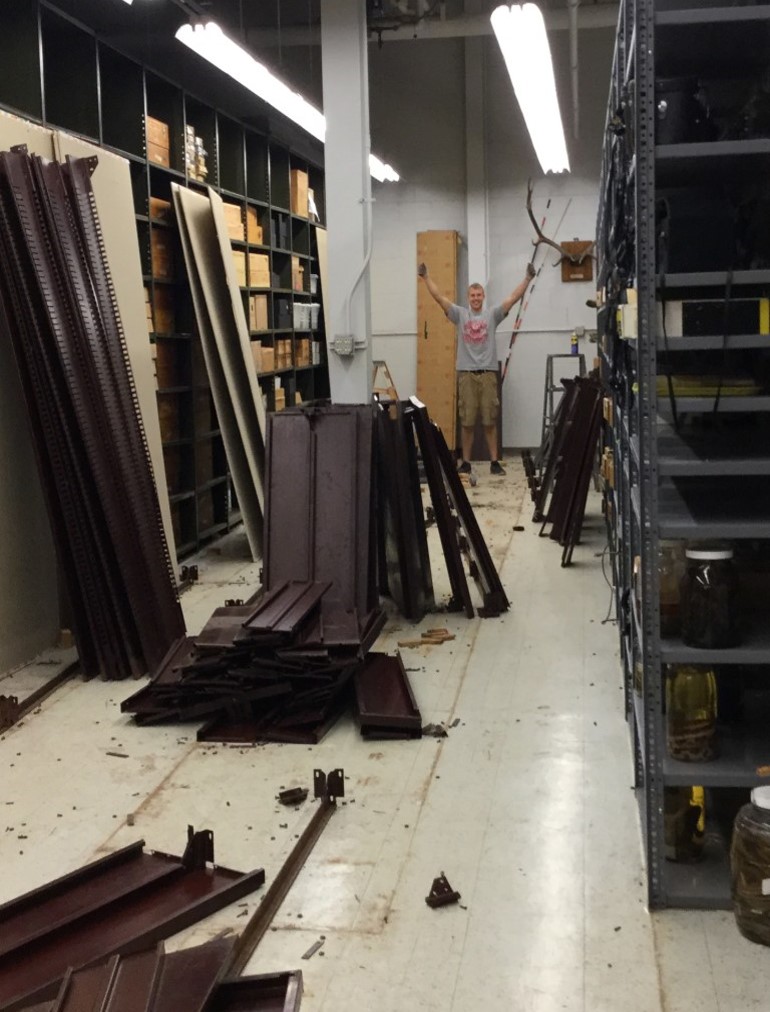As we mentioned in our previous post, at the conclusion of the semester we asked our interns to share their impressions of the time they spent with us. We have taken the liberty of using some of their comments (highlighted in italics below) to provide a picture of their experience.
“Insects are often thought of as the least appealing members of the taxonomic Kingdom Animalia. Even though most people recognize that they are, by definition, animals, people don’t like them as much as cuddly cats and dapper dolphins. Admittedly, this applies to myself as well.”
This kind of impression is widespread and can be heard often. By providing a broad view of entomology we hope the interns developed a new perspective and will now write that last sentence in the past tense!
To our delight, all the interns came out of the internship with a better understanding of (and some experience on) the wide range of skills and knowledge needed in curatorial work.
“Multiple tasks were laid before me throughout the semester, slowly building on previous knowledge and skills. … Originally, I had no idea how much time an entomologist may spend simply sitting in front of a computer. A portion of my time was spent databasing specimens, an important task allowing for collections to be easily found and identified. It has been made apparent how important this is when considering that millions of specimens fill the cabinets of the collection.”
“Through performing the … tasks, I was able to increase my knowledge of both the curation profession as well as the study of entomology in general”.
“… the only expectation I really had was that I would leave the internship having gained a lot of insect and museum-related knowledge that I had not had before. … this expectation was fulfilled with flying colors!”.
People have different styles of learning, and “doing” can often be more effective than listening or reading. The interns highlighted the importance of hands-on activities.
“… seeing the physical traits of different orders and families in person helped me to memorize these classifications for the General Entomology course, and gaining experience with pinning and labeling helped me to improve my collection project for the same course.”
“Whereas my entomology class was somewhat hard to grasp at times as a result of its lecture format, I found that hands-on activities (the same kind that are done by REAL curatorial staff in REAL museums) really ingrained a lot of the knowledge into my brain in a more profound way than surface-level memorization ever could.”
- Alex Ent sorting insects specimens from a wet sample under a microscope
- Hannah McKenzie identifying beetle specimens to family
- Ellen Dunkle identifying beetle specimens to family
It is sometimes interesting to see how people react differently to the same task:
“I was able to further classify/identify the specimens by family using a taxonomic key. This exercise taught me how to use a key and how to look for specific features of insect physiology/morphology.”“Later came the classification by suborder and family, a grueling task using a key much like a personal narrative children’s book only with scientific terms and a lot of microscope adjusting. Though tedious and time consuming, I find it interesting to understand how such small characteristics may differentiate one insect family from another.”
Perhaps the most gratifying, though, was to see that at least a little taste of the fun and excitement that we find working with insects was also experienced by the interns:
“One of my favorite insects that I found while working in the collection was a cuckoo wasp, a very small organism but with brilliant colors that sparkle as if dipped in jewels. Everyway you turn the tiny hymenopteran, the colors seem to shift, ranging from a deep, rich blue to a bright metallic-like green with some splashes of vibrant red or orange. Not only is it beautiful but also to Dr. Musetti’s excitement it is a parasitoid wasp, laying eggs in a host species.”
Taking on an internship is a pretty serious commitment of time on the part of the student, and we hope that it turned out to be time well invested. We have all learned from the experience, and we will use what we have learned to continue to improve. Even if a professional job as curator is not in the interns’ future, at least we have made a contribution to a future taxpaying citizenry that will understand the whys and wherefores of an insect collection.
“The past ten weeks have been quite the eye opening experience for me. Science is tedious work that I am happy to tackle. I have learned things I did not know I was interested in, as well as things I may not want to spend the rest of my life doing. Not only has this internship helped me to understand what it takes to have a collection, but I also have a compelling experience that may help me stand out from the others when searching for a career in entomology.”
”Overall, I feel that this internship has been very beneficial to me as both a student and a person. It provided me with a better background in entomology, it showed me the importance of curatorial work, and it gave me workplace experience that will benefit me in future careers both inside and outside of entomology.”
”I was able to get a complete picture of what entomology is like in the museum world, which, to me, is the overarching purpose of the (internship) program itself.”
Snapshots of the interns’ lab notebooks:
- Date, start & end time, number of specimens & families of beetles identified
- Cleaning up is part of the daily activities
- Each task is briefly described & details of each sample sorted is recorded
2016 Interns:
- Ellen Dunkle
- Alexandria Ent
- Hannah McKenzie
About the Authors: Dr. Natalia Munteanu Molotievskiy is an Entomologist and Guest Scholar, Dr. Luciana Musetti is an Entomologist and Curator, & Dr. Norman Johnson is Professor of Entomology and Director of the Triplehorn Insect Collection.
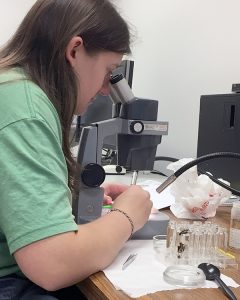

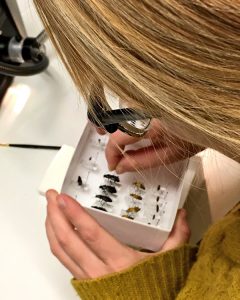

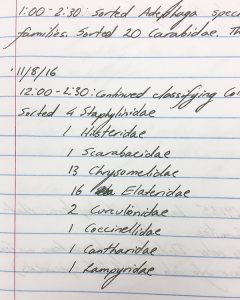

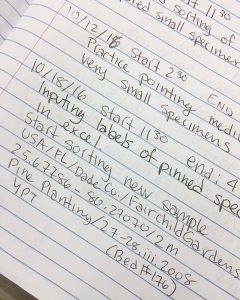
 Last semester we of the Triplehorn Insect Collection offered our first
Last semester we of the Triplehorn Insect Collection offered our first 



















